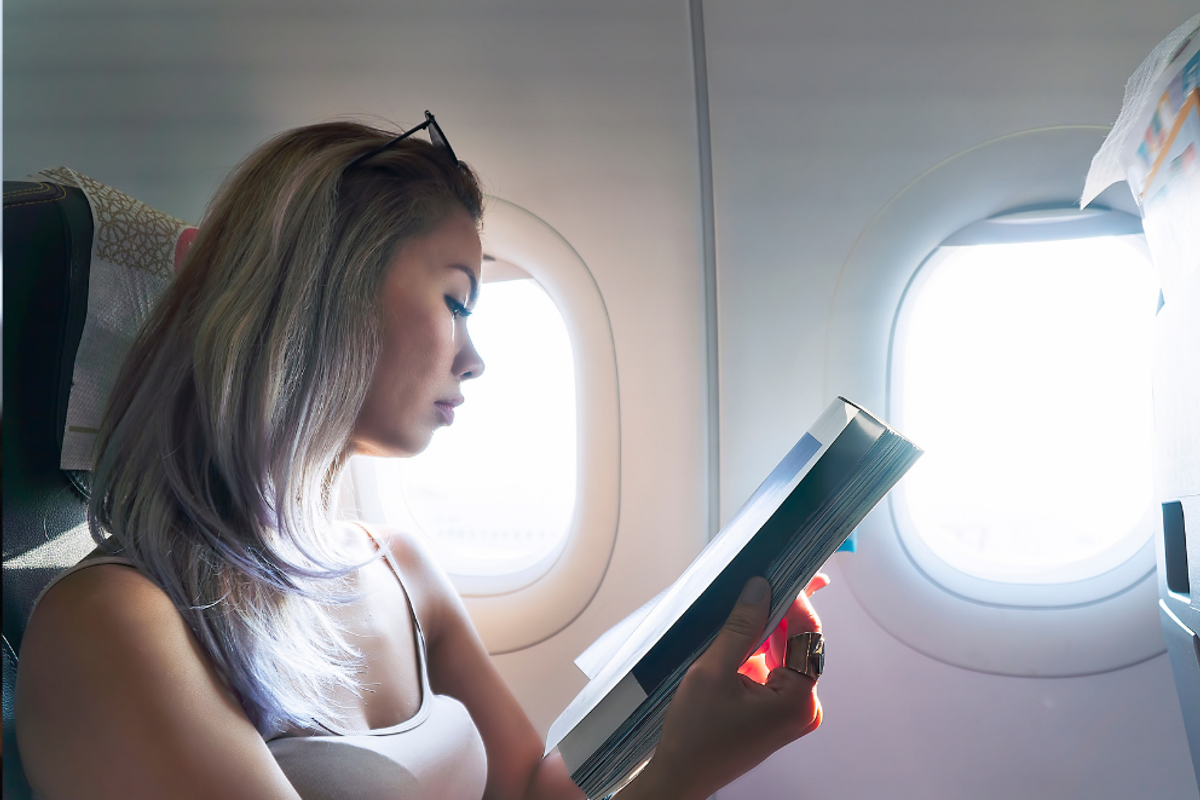Until we meet again: How Hana Hou! became America’s final inflight magazine
“I could make that magazine last for almost my entire flight as I looked through every item and tried to picture the type of person that would buy that stuff.”
Sky-high publications are vanishing.
Glossy pages, local travel tips that get you psyched for your arrival, and sudoku puzzles that bear the wrong answers of past travelers—inflight magazines have been a staple of air travel practically since aviation’s invention. But in today’s increasingly digital world, these sky-high publications have nearly vanished in America, with one notable exception: Hawaiian Airlines’ Hana Hou! magazine, which is now the final printed airline magazine by a major U.S. carrier.
Before that was Hemispheres, the inflight magazine of United Airlines, which, after 32 years, published its final edition in September 2024. Ellen Carpenter, the former editor-in-chief of Hemispheres, told the Columbia Journalism Review that, although the magazine reached 12 to 15 million people per month, print was no longer feasible or a priority for the airline.

“As the Internet grows and grows, it’s harder and harder to find curated content,” she explained. Hemispheres marked the latest casualty in what has become a mass extinction of in-flight magazines: once cherished travel companions and information-rich texts are now completely gone from the seatback pockets. Over the past decade, we’ve seen numerous airlines discontinue their print publications, including those from Delta, Alaska, Southwest, and American Airlines, which ended its American Way publication in 2021. This shift is larger than cost-cutting for airlines: it’s the end of a tradition that once united us, strangers, in the sky.
The history
The inflight magazine began, where else, but Pan American Airlines in the 1950s. Commonly known as Pan Am, the airline “epitomized the luxury and glamor of intercontinental travel,” a status reflected in its magazine, Clipper Travel. Although, the golden era of the inflight magazine was arguably in the 1980s, which approximately lines up with or directly after the golden era of journalism. At the most basic level, these free magazines offered small details about the fleeting and sumptuous advertisements for luxury goods. However, they could also be gold mines—bastions of local journalism with a trick up its sleeve. You see, airplane magazines enjoyed the attention of captive audiences with few other means of distraction. As airlines began to see the potential their magazines had to attract business travelers and advertisers, they began heavily investing in these publications, which included offering writers a unique type of freedom not found anywhere else.
American Way, the former in-flight magazine of American Airlines, reached more than 73 million people on planes alone in 1990, according to The Washington Post. Back then, inflight magazines were not merely promotional brochures; they were legitimate publications with the budgets and reach to create content that flyers actually wanted to read.
“It really was a golden age,” said Doug Crichton, editor of American Way from 1988 to 1993. “The airline just said, ‘Do whatever you want.’ …Our goal was to make it a New Yorker of the sky.”
Writers during this time could earn between $1 and $3 per word, with article features commanding a substantial $2,500 (when adjusted for inflation, that equals about $6,000 today). "The airline magazines were really still that bastion of great print journalism where they would say we’re going to send you to Spain, we’re going to send you to Mexico,” said Jenny Adams, a freelance journalist based in New Orleans who wrote for American Way, Hemispheres and other in-flight magazines.
However, as technology advanced, the inflight magazine found itself competing against movie screens, gaming consoles, personal entertainment systems, smartphones, and high-speed Wi-Fi for attention. They began to lose their allure. Then, in 2020, as the COVID-19 pandemic shocked the airline systems, it delivered a final blow as airlines temporarily removed magazines to ensure safety regarding surface transmissions.

On Reddit, many users lamented the loss of the inflight magazine, with one writing, “I miss the [American Airlines] magazine. They always did deep dives into interesting locations.”
Another commented, “There was a great interview with Bill Murray in one of the last issues I read. They were always a bit off-beat like that, and I remember thinking ‘I wonder what Bill Murray’s publicist thought when whoever called was like, you know, it’s for the magazines that go on airplanes.’”
Still others missed the SkyMall shopping magazine, writing, “I could make that magazine last for almost my entire flight as I looked through every item and tried to picture the type of person that would buy that stuff.”
Hana Hou!
However, there is one saving grace: Hana Hou! magazine. Published bi-monthly, the Honolulu magazine is still prized for its high-quality journalism and engaging storytelling centered around Hawaiian culture and the islands’ heritage. The magazine, which roughly translates to “Encore!”, has received awards from the Society of Professional Journalists and maintains an extensive archive dating back 20 years.
"Hana Hou! has not only served as an entertainment option but also as a cultural ambassador, connecting travelers to Hawaii," notes Beat of Hawaii. This travel website suggests that readers "might want to pick up a copy of Hana Hou! soon,” because it “might become a valuable collector's item one day."
Indeed, the future of Hana Hou! remains uncertain, with Hawaiian Airlines’ recent acquisition by Alaska Airlines (which previously discontinued its print magazine), so it’s possible that the publication’s days may be numbered. That outcome would be heartbreaking because we’re not just losing magazines, we’re losing a tangible artifact—something that any one of us could pick up while flying, that had the power to connect us, even just for a second. To make us feel human. Inflight travel writer, Jenny Adams, sums it up perfectly: "It's hard now when you're on your phone. You don't have that same connection. It's not tactile. You're not, like, excited to go fly somewhere. I'm just gutted that that's all gone.”
